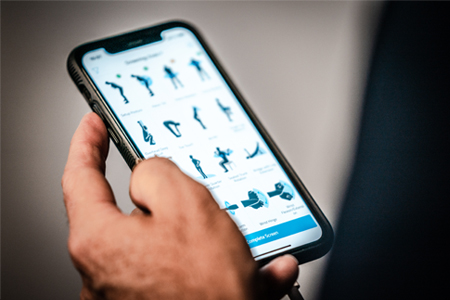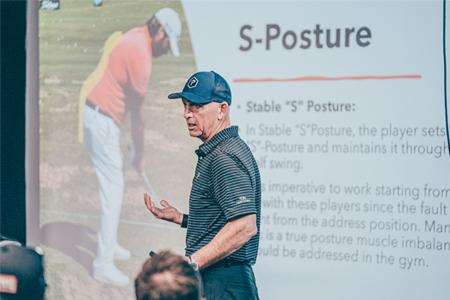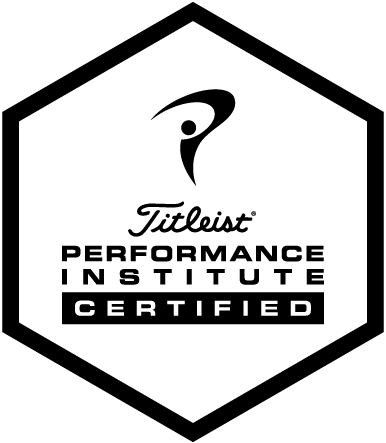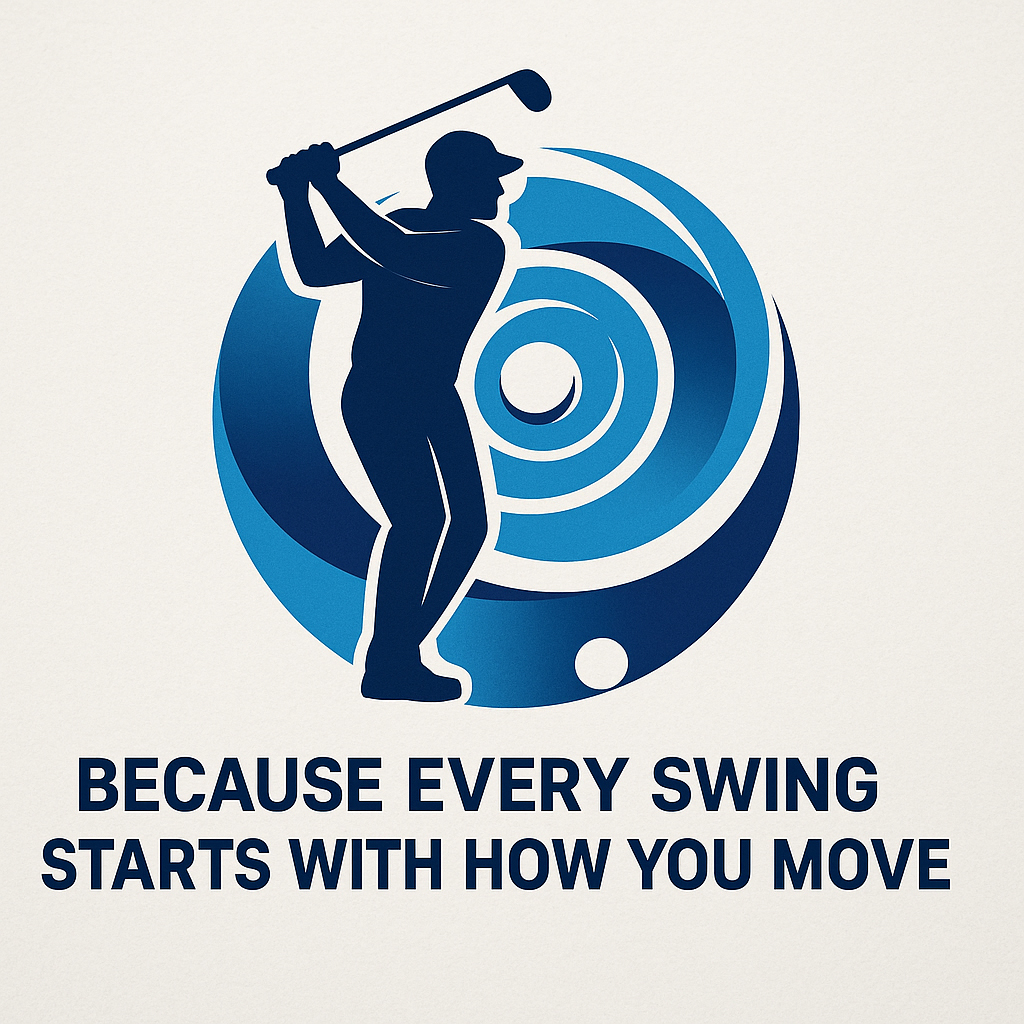You’re the driver behind your player’s game. I’m here to be part of the pit crew-fine-tuning the body so your athlete can perform at their best. As a licensed Physical Therapist, TPI Certified practitioner, Certified NG360 Nike Golf Functional Performance Trainer, and Fellow of Applied Functional Science (FAFS), I bring a unique blend of clinical expertise and golf-specific movement insight to your team.

I start with the proven TPI screen and layer in a comprehensive physical therapy evaluation to uncover mobility, strength, or stability issues that may be affecting your player’s swing.
Each player receives a personalized home exercise program designed to improve movement mechanics and complement your coaching-without adding complexity to your workflow.
Most movement limitations can be addressed in just a few focused sessions. I help your player feel and move better, quickly and efficiently.
If your athlete is dealing with pain or injury, I offer advanced manual therapy and over 20 years of clinical experience to help resolve it-so they get back to you, and back to the course, sooner.

At TPI, I was trained to understand one key principle: the golf pro leads the team! My job is to support your coaching goals and keep you informed every step of the way.
If the player is the race car-you’re the driver, and I’m the pit crew. Together, we optimize performance, reduce injury risk, and help your athletes reach their full potential.
FOR EXAMPLE, you may want me to assess your client to determine if physical limitations are contributing to swing issues-like coming out of posture or early extension during the backswing or downswing. Maybe your player is coming over the top, struggling to get back on plane, losing power, or putting unnecessary strain on their wrists. Even with solid coaching cues, you might sense there’s more potential to unlock.
In other cases, perhaps your client is swaying too much on the back swing or sliding too much on the downswing and adjusting their stance width and feet position is causing pain? Or worse-your client is cutting back on lessons altogether because they’re in pain.
Lets say that you KNOW its a physical limitation causing your unwanted swing characteristic(s). Why not send them to me for a few sessions of manual therapy to mobilize restricted joints and lengthen soft tissue (joint mobilizations, ART, Graston technique, MFR etc.) and a couple targeted corrective home exercises? This way they keep with their golf lessons and stay on the course.
WE BOTH KNOW the golf swing demands an incredible blend of mobility, stability, and control throughout the body. The mobility requirements alone are significant: ideally, the lower extremities need to rotate a total of 60 degrees-40 degrees at the hip, 15 at the knee, and 5 at the ankle. The thoracic spine must rotate at least 45 degrees, and the shoulder should externally rotate past 90 degrees. But here’s the catch: put those demands upright, under gravity, and now the body needs not just range-but strength and motor control-to earn the brain’s permission to move.
Did you know the body’s nervous system is wired to take the path of least resistance? It seeks efficiency and safety, favoring stability over mobility-especially when it senses a threat, weakness, or discomfort.
Take the thoracic spine-the upper torso. Fortunately for us in golf, these 12 vertebrae are built for three-dimensional movement: flexion/extension, side bending, and crucially, rotation. Golf is a rotary sport, and we rely on thoracic mobility for a powerful and efficient swing. In contrast, the lumbar spine (low back) is not built for rotation. So when the brain senses instability, pain, or inadequate strength, it often restricts thoracic motion-shutting it down to protect the body.
What happens next? Your player may compensate with a reverse spine angle, excessive slide, hanging back, or casting/scooping-patterns that are often rooted in mobility or control deficits. My job is to figure out why: is it a mobility issue, a strength deficit, a motor control problem-or most likely, a combination of all three? I identify and address these limitations so your player has the physical tools they need for you to help them reach their full potential.
And by the way-if that thoracic spine stays locked down, your player will often try to rotate through the lumbar spine instead… which is not designed for it. That’s where low back pain enters the picture.
Let’s work together to get your players swinging stronger, safer, and with greater confidence.
Just in case you are not familiar with TPI, I have included the following info from TPI:

TPI (Titleist Performance Institute) is the world’s leading educational organization dedicated to the study of how the human body functions in relation to the golf swing. For over twenty years, TPI has gathered the world’s largest technical database of the game’s top Tour professionals as well as every-day golfers. TPI collects 3D motion capture, force, pressure, launch monitor, strength, power, and movement data on every player that visits the TPI campus. Using this data, TPI discovered how a properly functioning body allows a player to swing a golf club in the most efficient way possible. Conversely, TPI determined how physical limitations in a player’s body can adversely affect the golf swing and potentially lead to injury. This relationship is what TPI calls The Body-Swing Connection and is the foundation of all professional Certification courses offered by TPI.
TPI’s mission is to educate golfers and industry professionals on the Body-Swing Connection through its one of a kind TPI Certified educational program.
TPI believes that golfers should match their swing style to their movement capabilities. The philosophy is simple:
There are an infinite number of ways to swing a golf club. However, there is one most-efficient way for each player to swing a club and it is based on what they can physically do.
To achieve an efficient swing, a golfer must first be screened. A proper screen involves an assessment of swing mechanics, biomechanics, physical fitness, movement quality, current health, and injury history.
The TPI movement screen is a simple test to quickly evaluate a player’s physical capabilities. The results of that assessment are used to determine how technical elements of the player’s swing could be related to what their body can or cannot do. Once this screen is finished, the results are used to create a plan unique for that golfer. The plan may include fitness training, physical therapy and treatment, coaching of swing mechanics and biomechanics, nutrition, mental strategy or all of the above.

Let’s connect and create a winning strategy for your players.
Whether you’re looking to fine-tune movement patterns, overcome limitations, or get an injured golfer back on the course, I’m here to support your goals as part of your professional team.
I also offer some free classes that combine a bit of assessment with corrective exercises for golf clubs. Please let me know if you are interested in collaborating?
Call or Text: 518-281-3534
Email: PTforgolfers.com
Serving Venice, FL & Surrounding Areas
Schedule a Consultation or Contact Me Here to learn more about how we can work together.
You lead the game. I’ll help keep the engine running.